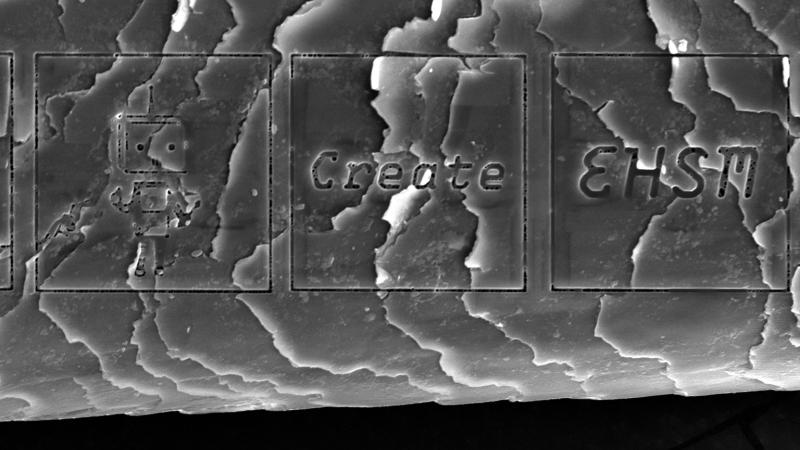June 23, 2014

(Rensselaer doctoral candidate Andrew Zonenberg explains how his research led him to create the "world's smallest comic strip" by using focused a ion beam to carve the drawings onto a strand of his girlfriend's hair in this great guest post.)
As a doctoral candidate — working in with Professor Bülent Yener, director of the Data Science Research Center — my research focuses on how to make software harder to exploit by changing the way computer hardware is designed. This sort of work tends to blur the line with hardware security, tamper resistance, etc.
This past spring semester I was the teaching assistant for CSCI 6974, an experimental course in integrated circuit security and reverse engineering. Part of my duties as TA involved preparing specimens for the students to use during lab exercises; in some cases this required use of the Department of Materials Science and Engineering's FEI Versa 3-D focused ion beam system.
A focused ion beam (FIB) is an instrument much like a scanning electron microscope (many FIB systems, including the Versa, are also capable of functioning as an scanning electron microsope) except it sends a beam of gallium ions instead of electrons towards its target. The ion beam functions almost like a microscopic sandblaster; as each ion hits the specimen it may dislodge an atom from the surface. By aiming the beam at different parts of the sample it is possible to make extremely precise nanoscale cuts.
My main use of the Versa FIB for the class involved making cuts in the insulation over wires on the chips we were studying so that we could touch electrical probe needles to them and read signals out of the chip.
In early April, I was contacted by Sébastien Bourdeauducq, one of the organizers of the Exceptional Hardware and Software Meeting, a tech conference which will be held June 27-29, 2014 in Hamburg, Germany. Bourdeauducq was looking to engrave a comic strip depicting the various themes of the conference into a human hair as a promotional event and was reaching out to all of the researchers he knew that did FIB work.
After discussing some details of how to set up the instrument we agreed on a plan and he sent me the image files. I then cut a short piece of hair from my girlfriend's head and went up to campus. It took a few attempts to get good, clean cuts; the hair was so soft compared to the materials I usually worked with (silicon, aluminum, and glass) that it was very easy to totally destroy the surrounding area. After an hour or so of tinkering I got things adjusted right and the remainder of the engraving took only around 30 minutes.
Each panel of the comic is 25 microns square, the smallest lines are around 200 nanometers wide — fairly big by nanotech standards. While the Versa is capable of making substantially finer cuts (a few nanometers under ideal conditions) I wanted the comic to be large enough that the entire diameter of the hair could still be seen to put the size in perspective (as seen below).

